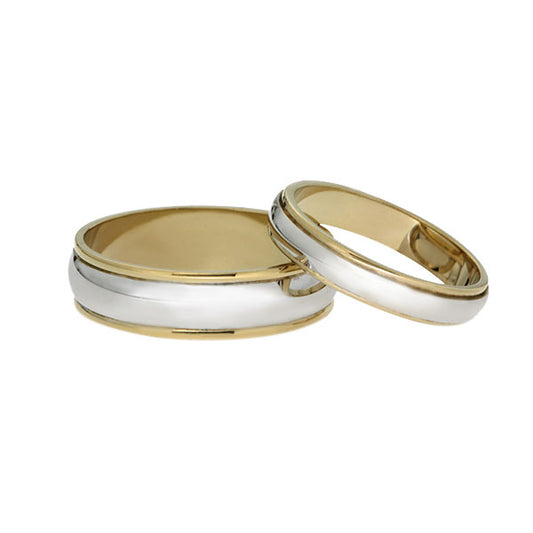A Guide to Different Types of Metals for Jewellery: Pros, Cons, and Care Tips

When it comes to picking out jewellery, the type of metal used can make a big difference in both the look and feel of the piece. Whether you’re buying a necklace, ring, earring or bracelet - or even custom designing your own - it’s important to know your metals! Different metals offer unique benefits and characteristics, but they also come with their own sets of drawbacks. Join us as we break down the most popular jewellery metals, what makes them shine, and how to keep them looking fabulous.
Gold: The Timeless Classic
First up we have arguably the most famous and coveted metal, 79th on the periodic table it’s of course, gold.
Gold has been used for jewellery for thousands of years - and for good reason! It’s luxurious, easy to work with, and never goes out of style. Gold comes in different ‘karats’, which indicates its purity, as well as various colours like yellow, white, and rose. Engagement rings and high-end necklaces often use 18k or 14k gold for a balance of beauty and durability.
Pros:
- Durable: Pure gold (24k) is soft but alloys like 18k or 14k are much harder and more durable.
- Hypoallergenic: Pure gold is one of the most hypoallergenic metals.
- Versatile: Can be alloyed into different colours like white or rose gold.
Cons:
- Soft (if too pure): Higher karats (like 24k) are softer, making them less ideal for everyday wear and more prone to damage.
- Expensive: Gold isn’t cheap, and higher karats get even pricier.
PJ Care Tips: Gold alloy ( such as 9kt, 14kt and 18kt) can tarnish over time, especially rose gold, so make sure to clean it with a soft cloth and avoid wearing it in harsh conditions (like during exercise or while using chemicals).

Silver: Affordable Elegance
Next on our list we have the more affordable, but no less classic, silver.
Sterling silver is an affordable yet classy option for jewellery. It’s popular for everything from everyday rings to boho-style layered necklaces. Silver objects have been found dating as far back as 4000 BC and some historians believe it was first discovered around a thousand years before that.
Pros:
- Affordable: Sterling silver offers a luxe look without the high price tag.
- Bright finish: Silver has a bright, reflective sheen that’s beautiful and timeless.
Cons:
- Tarnishes: Silver reacts with sulphur in the air, leading to tarnishing over time.
- Softer than gold: Can scratch or dent more easily than other metals.
PJ Care Tips: Keep your silver in anti-tarnish pouches such as sealable plastic bags when not in use and regularly polish it to maintain its shine with a silver polish cloth. Silver is actually one of the most reflective elements, reflecting 95% of the visible light spectrum, so make sure you look after your pieces to keep them shining!

Platinum: The Rare Heavyweight
Next up in our metallurgical exploration is the popular platinum.
Platinum is one of the most durable and precious metals used in jewellery. About 20 times rarer than gold, all the platinum ever mined would only cover your ankles in one Olympic sized swimming pool. It's popular in engagement rings and fine jewellery due to its durability and luxurious appearance and is even the only metal suitable for use in pacemakers.
- Pros:
- Extremely durable: Platinum is known for its strength and resistance to wear.
- Hypoallergenic: Like gold, platinum is hypoallergenic.
- Never tarnishes: Platinum will keep its natural white shine forever.
- Cons:
- Expensive: Its rarity means platinum is one of the most expensive metals on the market, however is cheaper than gold at this moment due to the instability in the world.t.
- Heavier: It’s heavier than other metals, which some people may find less comfortable for everyday wear.
PJ Care Tips: Platinum is durable but can still scratch, so regular polishing is needed. It doesn’t tarnish, but its shine can dull over time without maintenance.

Some best-to-avoid metals
While there are plenty of great metals for jewellery, there are also some that should be avoided, mostly due to skin irritation or durability issues.
- Nickel: This is a common cause of allergic reactions in people with sensitive skin. While nickel is often used in cheap costume jewellery, it’s best avoided for items you wear daily.
- Copper: While copper looks cool with its reddish tone, it can tarnish quickly and leave a green stain on your skin. It’s best left for decorative pieces rather than everyday jewellery.
- Brass: Like copper, brass tarnishes and can turn your skin green over time. It’s often used in costume jewellery but isn’t ideal for fine pieces.
By understanding the pros and cons of different metals, you’ll be able to choose the best material for your jewellery collection - whether it’s a classic gold necklace or a sleek platinum ring. When it all boils down to it, the main thing about choosing a metal for your jewellery is that it works for you! Come on by the store to find your next perfect piece.








